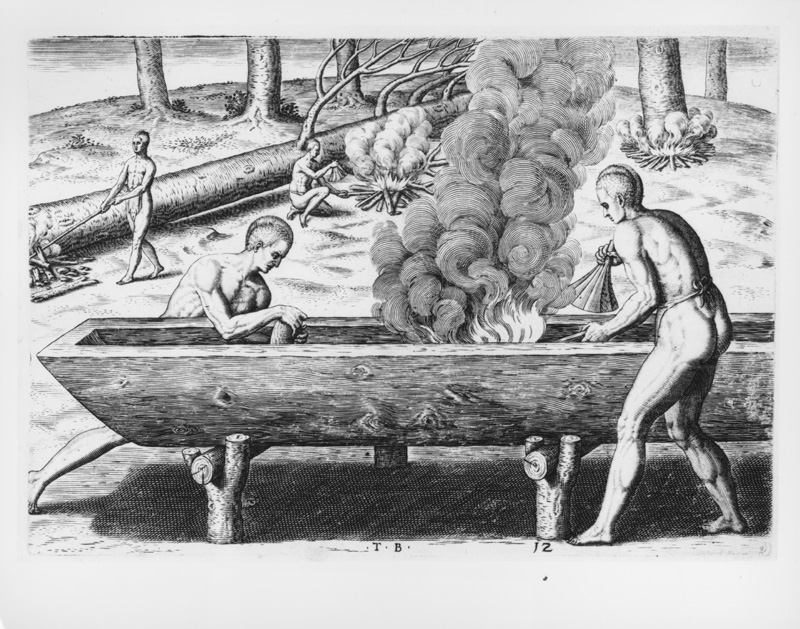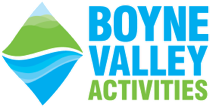This website uses cookies to help deliver its services. By using this website, you agree to the use of cookies as outlined in our Privacy Policy.


This time of the year when I go out for my morning paddle, the river is full and steady and quiet. I have the water to myself, apart from the odd heron or duck. Drifting by ruins and castles in the fog, I often wonder about the different types of boats that would have been here back in the day. After a bit of research and a few tweets to the National Museum, I discovered that some of the boats of the Boyne were quite unique, and like most artifacts they tell us something about how people in the Boyne Valley would have lived back then.
Prehistoric Boats of the Boyne
The big debate over which were the first boats on the Boyne is between dugouts and coracles. Both have been found in the Boyne. Coracles are essentially upturned baskets. They were woven with hazel or willow and covered in waterproofed animal hides. Their ease of manufacture mean that none survive for very long so it is impossible to tell how long ago they were in use. The fact that coracles appear in cave paintings and they were used in places as far flung as Iraq, China and America in prehistoric times does suggest that they could have been used by the Boyne mesolithic people (7000BC – 3500BC).
Some archaeologists believe that felled trees would have been used for floating on water and this may make them the earliest form of water transportation. However, proper dugouts need to be hollowed out. This means using a good stone axe on a haft and this technology did not appear in the Boyne Valley until much later (3500BC – 2500BC). The Boyne Valley prehistoric farmers had to use boats to bring the first cows and sheep to Ireland. If I had to ferry a few nervous animals across water, I would use a coracle rather than a dugout. Either way, it would make for an interesting journey!
Medieval Boats of the Boyne
Finds such as the Broighter Hoard show us that watercraft used oars, rowlocks and a paddle rudder in the Iron Age but we find nothing like this with the boats of the Boyne in the medieval period. Like coracles, boats were often reused and rarely survived for long. According to historical sources, coracles remained popular with early Irish Irish navigators like St Brendan and St Columbanus. They were forever heading off on fantastic adventures and missions. When St Patrick arrived in Ireland it was probably on a Celtic raiding ship similar to what Caesar described in his conquest of Britain. These had flat bottoms, high brows and cross beams held with iron nails.

Sea Boats had by then started to use plank building techniques. Traders had to put a bit more effort into their investments but river boats would have stayed similar to dugouts or coracles because the builders were constrained by local resources. When Patrick moved up the Boyne in the 5th century it was probably on a flat bottomed skiff type boat similar to others that were in use all over Europe at the time. When change did come in boat-building, it was from the North and it was as a result of trade.
The Vikings were on the Boyne with their longboats in the 9th century. They were expert boat-builders and they revolutionised the design of boats with their clinker built systems of overlapping planks. The Viking longboats of the Boyne were beautiful and graceful vessels. They could dart at speed across shallow waters, reverse at command and were even light enough for portage across land. These were the Ferrari of the medieval rivers. No wonder they buried their kings in them. Seeing them shoot out of the fog on mornings like this would waken you up fairly sharpish.After the Vikings started to behave and become Dubliners, the Cistercians monks decided it was safe enough to start farming in the Boyne Valley. They used the Boyne as the first leg on the trade journey to their monasteries in Europe. By the time Henry VIII dissolved the religious orders who were trying to tell him how to manage his love life, the Cistercians had 16 boats on the boyne, but it is not clear if these were actually currachs or coracles. When the Norman arrived they used their own boats. Currachs and coracles were too small for the Normans. They had to move shiploads of goods from Drogheda to Trim and back again so they used horse drawn flat bottomed boats to shift the quantities they needed.

Modern Boats of the Boyne
Barges were the perfect boat for moving goods along the Boyne. During the Georgian period, when agriculturalists were building giant mills and factories along the Boyne, they also built a canal to help transport grain, coal and wood. This was a huge public works initiative, similar to national motorway schemes today. If only they knew that the Industrial Revolution was just around the corner, they could have held off on it. When the railways arrived, the Boyne barges fell out of favour. They did return to the water for a while as tourism took off in the Edwardian period. Steam powered barges such as the Ros na Righ brought day trippers for afternoon tea from Drogheda to Slane. The Boyne Coracle eventually began to die out in the 20th century. River net fishing for salmon was frowned upon and museum folk would come to interview the fishermen and take pictures of them as they used their one-handed figure of eight sculling paddle to beetle across the water.

Boats of the Boyne today
The coracle is back on the Boyne today, thanks to the work of the Boyne Currach Centre. Local coracle maker, Claidhbh Ó Gibne has built a 34ft currach which he hopes to sail along the Atlantic seaboard. You can also see one of the four remaining ancient coracles in the Millmount Museum, Drogheda. As the modern world has shrunk, new influences have come to the river. We have our own kayaks on the river now. These were originally designed by the Inuit Indians of North America and were built for hunting in freezing arctic waters. While the Boyne is nowhere near as chilly as the arctic, we do teach kayakers how to eskimo roll for their training courses. As a Grade 2/3 river, the Boyne is perfect for new kayakers and many of the top Irish kayakers first learned how to move in spots like Stackallen and the Big A. For the more leisurely minded, we have sit-on-top kayaks. These are a hybrid kayak and they are perfect for visitors who want to ride a few rapids without getting wet or having to be strapped in.

Another tribe of North American Indians were the first to start white water rafting. The Nez Perce Indians used giant wooden rafts to navigate along the Snake River that came gushing down from the Rockies. When the American army wanted to map the Great Plains through the Rockies in the 1840s they used rubber rafts to safely carry them through the giant rapids of the Platte River. This gave global entrepeneur, John D Rockefeller, the idea to use it for tourism. He bought up a load of surplus war rafts in the 1940s and started running trips through National Parks for his hotel visitors. As soon as we could get our hands on a few of them we put them on the Boyne and they have proved to be lots of fun.

If any of this floats your boat, you can book one of our interpretive history tours to learn more about the Boyne, try out our kayak training, get a gang together for some rafting or just book a sit-on-top for some gentle paddling along the river trail. Just give James a ring on 086 734 2585 and he will sort you out.
Sources
The Boyne Currach, Claidhbh Ó Gibne, Four Courts Press, 2012
IWAI, Boyne Navigation Branch


